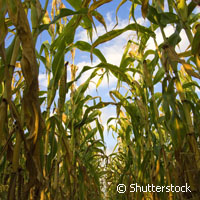EU researchers investigate biogas potential
Convinced that biogas can help the EU meet its commitment to produce 20% of its energy from renewable sources by 2020, EU-funded researchers are investigating which technologies and regulatory frameworks are best suited for widespread but sustainable biogas production in Europe. EU support for the SEBE (Sustainable and Innovative European Biogas Environment) project, totalling EUR 2.6 million, came from the EU Central Programme which is financed by the European Regional Development Fund (ERDF). Biogas is one of the most versatile energy carriers; it can be used for generating electricity and heat, for cooling purposes, it is a potential vehicle fuel and it can be upgraded to biomethane to be fed into the national gas grid. 'Biogas production makes use of a naturally occurring anaerobic process and supplies a controlled technical environment that allows for the catching and utilising of the gases produced,' explain the SEBE researchers. 'The anaerobic biological process degrades and stabilises organic material by microorganisms and leads to the formation of methane and inorganic products including carbon dioxide. Methane gas is an energy carrier and can therefore be used to generate energy.' They highlight that this energy 'has the potential to displace other energy sources such as fossil energy, this reduces greenhouse gas emissions and contributes towards a more sustainable energy concept'. In short, 'anaerobic digestion (AD) with biogas production has a major role to play in meeting the 2020 goal', they insist. Germany, for example, has grasped this potential and already installed nearly 5,000 biogas plants, with potential for further installations. However, other European countries remain to be convinced, questioning in particular the economic viability of biogas plants. SEBE is determined to answer the doubters by establishing a common understanding of biogas across central Europe, its possibilities and the policies and frameworks needed to make it a successful renewable energy provider. The project is being carried out under the leadership of the Internationalisierungscenter Steiermark (ICS) in Austria; it is also playing particular attention to regions in the Czech Republic, Hungary, Poland, Slovenia and Slovakia. Know-how transfer into these countries is one of the project's main aims. However, in order to do this, the project is initially trying to understand what makes AD schemes work across Europe and identifying areas which need further development and harmonisation. According to the researchers, they are investigating a broad range of issues including 'different operating environments (legal, economical, logistical and technical), the availability of qualified personnel, and current and potential resources'. In addition, they are elaborating 'guidelines and a transnational strategy for future education and training in the biogas sector' and are carrying out 'regional development consulting'. Biogas experts from different institutions are looking at different subjects; for example, the chair for Waste Management and Emissions of the Institute for Sanitary Engineering, Water Quality and Solid Waste Management (ISWA) at the University of Stuttgart in Germany is studying the role of decentralised micro-gas networks. SEBE researchers also want to encourage networking between AD experts via a series of transnational Competence Knowledge Centres. To ensure that the studies reach as wide an audience as possible, they will form a Policy Advisory Board made up of external stakeholders, decision-makers and opinion leaders not directly involved with the project to help communicate project results and enable access to other relevant international and national organisations and interest groups. The researchers hope that these communication channels will last beyond the lifetime of the project which is due to end in 2013.
Countries
Austria, Czechia, Germany, Hungary, Poland, Slovenia, Slovakia



